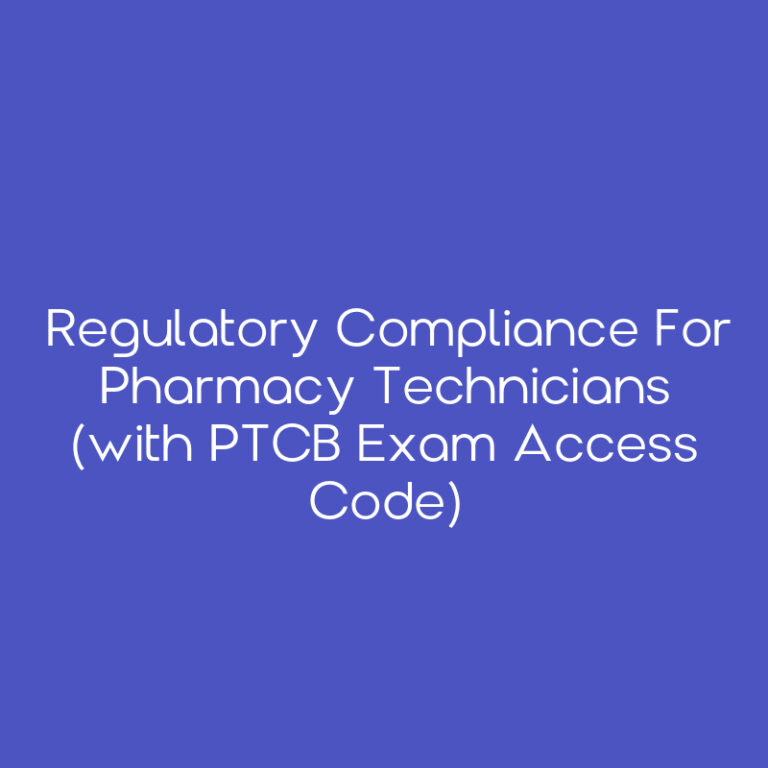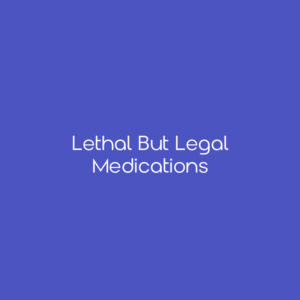Regulatory Compliance for Pharmacy Technicians (with PTCB Exam Access Code)

Regulatory Compliance for Pharmacy Technicians (with PTCB Exam Access Code)
Bundle your training program with PTCB’s Regulatory Compliance Assessment-based Certificate Program!
Here’s how it works:
1. Purchase this bundle
2. Complete the CEimpact Regulatory Compliance for Pharmacy Technicians Course
3. Receive an access code to take PTCB’s Regulatory Compliance Assessment-based Certificate Program Exam
Note: To be eligible for PTCB’s Regulatory Compliance Certificate, a candidate must hold an active PTCB CPhT Certification. For questions about PTCB’s Regulatory Complaince Certificate, please visit PTCB’s Help Center.
Regulatory Compliance for Pharmacy Technicians
Pharmacy technicians play an important role to support practice compliance with federal and state pharmacy laws. This course teaches laws and regulations, ethics, safety, and quality assurance strategies for technicians to follow in order to protect the patients they serve.
*This course is approved as a prerequisite for pharmacy technicians sitting for PTCB’s Regulatory Compliance Assessment-based Certificate Exam.
Upon successful completion of this knowledge-based CPE course, pharmacy technicians should be able to:
1. Discuss the respective role of each of the three branches of government.
2. Explain how administrative agencies meet their regulatory goals.
3. Describe the structure and function of the federal Food, Drug, and Cosmetic Act.
4. Indicate how federal drug laws assure the integrity of pharmaceutical products.
5. Explain regulatory requirements for extemporaneous compounding of pharmaceuticals.
6. Explain the process through which generic pharmaceuticals are approved.
7. Describe the closed system of controlled substance distribution.
8. Recognize red flags of controlled substance diversion.
9. Explain point-of-sale requirements for patient counseling and drug use review.
10. Identify tasks that pharmacy technicians are allowed to perform under state laws.
11. Discuss the legal requirements for credentialing of pharmacists and pharmacy technicians.
12. Outline the responsibilities of a Pharmacist-in-Charge.
13. Describe the process of quality improvement to prevent pharmacy errors.
14. List elements of an effective frontline pharmacy error prevention program.
15. Identify the basic principles of pharmacy practice ethics.
16. Discuss the steps that must be taken to assure patient confidentiality in pharmacy.
David B. Brushwood, R.Ph, J.D.
Senior Lecturer, The University of Wyoming School of Pharmacy
Pharmacy Law Content Developer, CEimpact
David B. Brushwood has no relevant financial relationships with ineligible companies to disclose.
Course fee includes course, course materials, and CPE credit submission to CPE Monitor.
Course is non-refundable.
Initial Release Date: April 21, 2025
Planned Expiration Date: April 21, 2028
This program is provided for educational purposes. CEimpact is not a law firm and does not provide legal advice of any kind. For legal advice, please contact a licensed attorney.
Copyright 2025, CEimpact. All Rights Reserved. Any reproduction of this course without express permission is strictly forbidden.
![]() CEImpact is accredited by the Accreditation Council for Pharmacy Education as a provider of continuing pharmacy education. Obtain CPE credit by completing the course, followed by the exam and evaluation (if applicable). Once successfully completed, your course will appear in your Completed Courses tab. Access your CPE statement of credit at www.MyCPEMonitor.net.
CEImpact is accredited by the Accreditation Council for Pharmacy Education as a provider of continuing pharmacy education. Obtain CPE credit by completing the course, followed by the exam and evaluation (if applicable). Once successfully completed, your course will appear in your Completed Courses tab. Access your CPE statement of credit at www.MyCPEMonitor.net.
¹CEImpact provides you with two (2) opportunities to complete the exam. The learner will not receive CPE credit after two failed attempts.
Additional information
| Duration | 5h 0m |
|---|---|
| Topic Designator | Law |
| ACPE | Yes |
| ACPE Topic | 03 Law |
| Role | Technician |
| Media-Type | Written |
| Release Date | 4/21/25 |
| CEUs | 0.5 |
| Rating | 4 |
| ACPE Number | 0107-0000-25-073-H03-T |
$159.00




